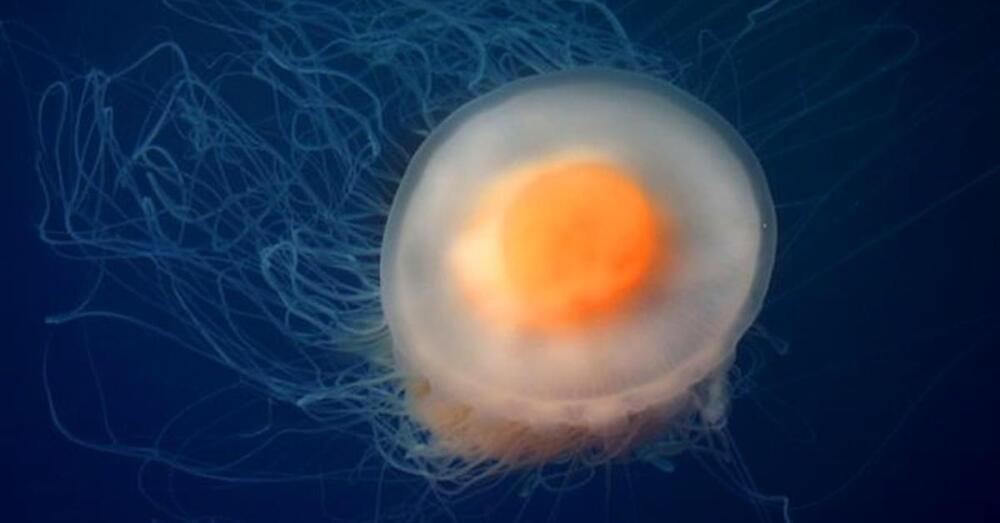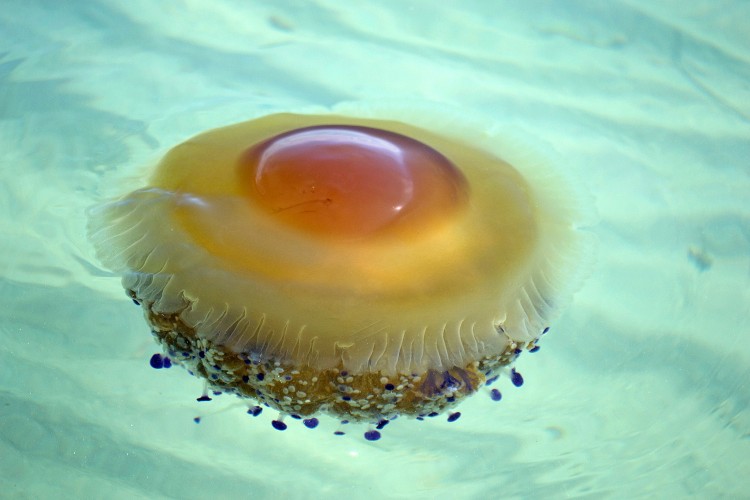The fried egg jellyfish, scientifically known as Cotylorhiza tuberculata, is a mesmerizing marine creature that has captured the attention of ocean enthusiasts and scientists alike. With its unique appearance resembling a sunny-side-up egg, this jellyfish boasts a fascinating biology and intriguing behaviors that make it one of the ocean’s most remarkable inhabitants.
The fried egg jellyfish gets its name from its distinctive shape and coloration. Its dome-shaped bell is typically transparent, with a yellow or white center that resembles the yolk of an egg, surrounded by a clear, gelatinous outer layer that mimics the egg white. This striking visual makes it easy to spot in the waters where it resides, often leading to delightful encounters for divers and snorkelers.
Reaching up to 15 inches in diameter, the fried egg jellyfish is not only visually captivating but also has a unique structural design. Its bell is composed of a soft, gelatinous substance, allowing it to drift gracefully through the water. The jellyfish’s long, trailing tentacles, which can extend from the bell, are equipped with specialized stinging cells called nematocysts. These cells are used to capture prey, primarily small fish and plankton.
Fried egg jellyfish are typically found in warm, shallow waters, particularly in the Mediterranean Sea and along the coasts of the eastern United States. They tend to inhabit areas with abundant nutrients, which are essential for their food sources. These jellyfish are often seen floating near the surface, where they can be easily admired by humans and marine life alike.
Despite their delicate appearance, fried egg jellyfish are well-adapted to their environment. They are passive drifters, relying on ocean currents for movement. Their feeding strategy involves capturing small prey using their tentacles and stinging cells, immobilizing them before bringing them to their mouths.
Interestingly, fried egg jellyfish also play a role in the marine ecosystem by serving as both predator and prey. They contribute to the food web by preying on smaller organisms while also providing sustenance for larger predators, such as sea turtles and some fish species.
As with many marine species, fried egg jellyfish face threats from climate change, pollution, and habitat degradation. Protecting their habitats is crucial for maintaining the balance of marine ecosystems. These jellyfish not only contribute to biodiversity but also play a role in nutrient cycling within their environments.
The incredible fried egg jellyfish, with its sunny-side-up appearance and fascinating behaviors, is a true marvel of the ocean. As we continue to explore and understand the diverse life forms that inhabit our seas, the fried egg jellyfish serves as a reminder of the beauty and complexity of marine ecosystems. Protecting these enchanting creatures and their habitats is essential for preserving the wonders of the underwater world for future generations.